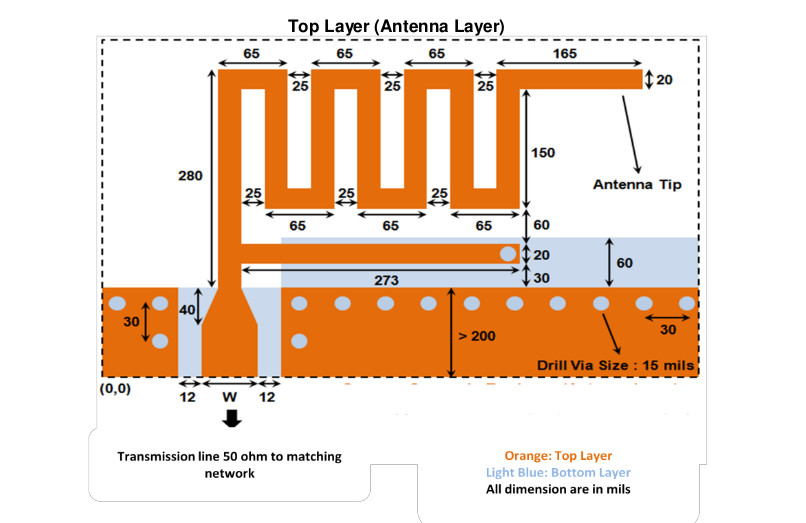I am designing the BLE solution using nrf52832. The board will be two layer board with solid ground plane in the bottom layer and signal and ground pour in the top layer. I am planning to use MIFA antenna for my PCB. I have few questions regarding MIFA as this is the first time I am designing an Antenna.
-
What is
Antenna Feedline?. Is it the PCB trace from ANT pin of SoC to Matching network? How to calculate it's width? Should it be 50 ohm transmission line and do I need to calculate it's width usingcoplanar transmission lineequation (because i will be having ground pour on both layers)? -
Do I need to tune my MIFA antenna by adjusting it's length (so that it can resonance at 2.4 GHz)? I am looking for some specific equation which includes PCB thickness, relative dielectric constant and other important parameters and give me length of MIFA antenna.
-
Do I need to place matching network passive components near to antenna? From ANT pin of SoC, there should be transmission line (called Antenna Feed) of 50 ohm (because impedance of ANT pin is 50 ohm). Then, there will be a matching network which will match the impedance of Antenna to 50 ohm. And just after the matching network, there should be antenna. Does my understanding is correct?
-
I can't find any antenna recommended by
nordic. Does nordic provide any antenna for their SoC? -
I have referred the MIFA antenna from this document.

I hope the antenna showed above (taken from document mentioned above) will give good performance for BLE. Please have a look at the antenna and guide me if i am doing something wrong.


